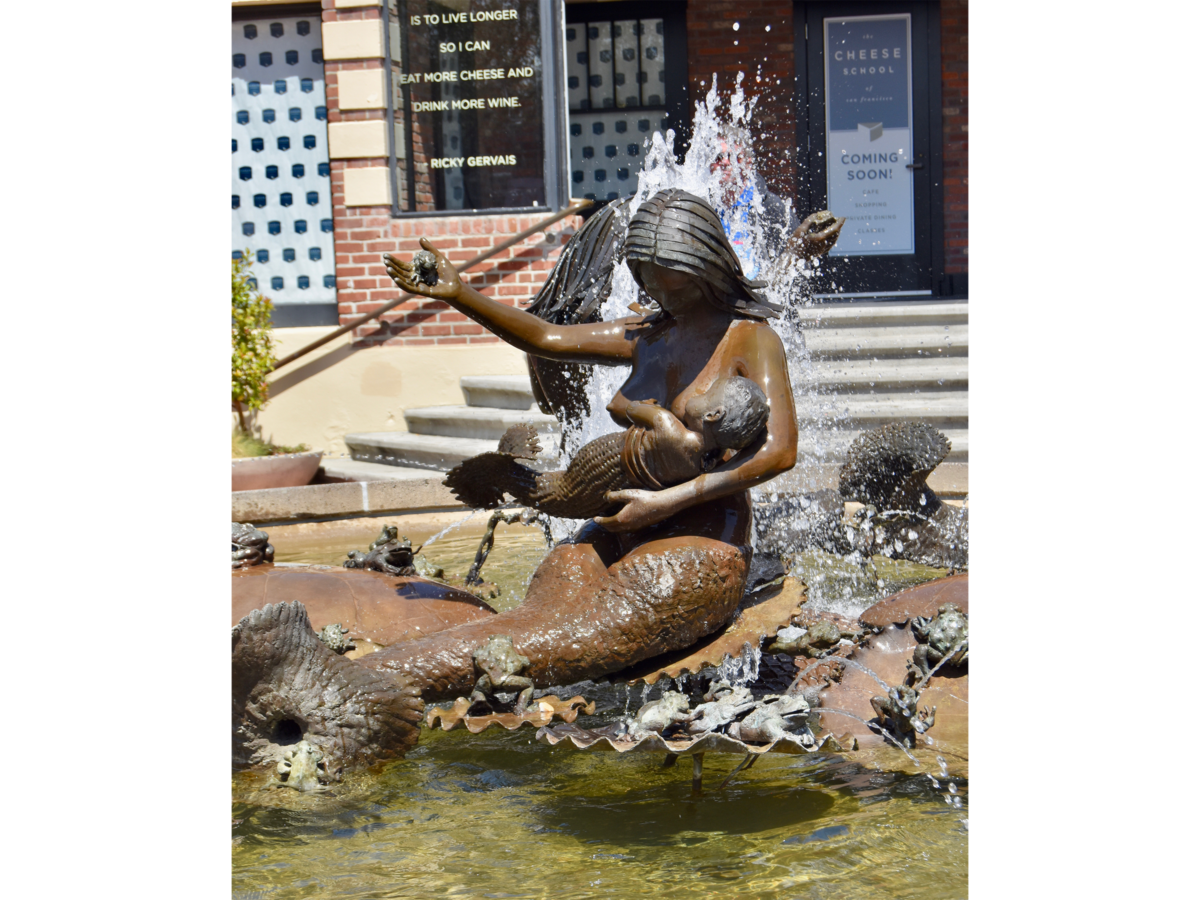Activity
Public Art and Civic Participation
Objective: Students will consider how public art promotes civic participation and social commentary by 1) researching Bay Area public art and completing research assignments or 2) submitting grant proposals for hypothetical public art.

Andrea, 1968, by Ruth Asawa (American, 1926–2013). Photograph by Nick Amoscato. CC BY 2.0
“Art is for everybody. It is not something that you should have to go to the museums in order to see and enjoy.” —Ruth Asawa
Common Core Standards (California)
5.VA:Cn11: Identify how art is used to inform or change beliefs, values, or behaviors of an individual or society.
6.VA:Re7.2: Analyze ways that visual components and cultural associations suggested by images influence ideas, emotions, and actions.
K.MA:Cr1: Discover and share ideas for media artworks using play and/or experimentation.
6.MA:Cn11: Research and show how media artworks and ideas relate to personal life, and social, community, and cultural situations, such as personal identity, history, and entertainment.
Acc.MA:Cn11: Critically investigate and proactively interact with legal, technological, systemic, and vocational contexts of media arts, considering civic values, media literacy, digital identity, and artist/audience interactivity.
6-12.SL.1: Engage effectively in a range of collaborative discussions (one-on-one, in groups, and teacher-led) with diverse partners on grade-appropriate topics and texts, building on others’ ideas and expressing their own clearly and persuasively.
SL.8.5: Integrate multimedia and visual displays into presentations to clarify information, strengthen claims and evidence, and add interest.
Guiding Question
How can public art preserve the history, struggles, and achievements of individuals and groups and be used as a form of civic participation?
Materials
- Examples of Ruth Asawa’s public art, found at https://ruthasawa.com/art/public-commissions/
- Sound speakers
- Projector
- Internet access
- Video: “How to Look at Public Art: A Six-Year-Old Explains”
Procedure
- Ask students to consider what public art is by facilitating a discussion.
- Take comments on what forms public art can take (e.g. performance, mural, sculpture, light installations, etc.).
- Discuss if there are less obvious examples of public art (e.g. little free book libraries, architectural design in single family homes, gardens, billboards).
- Ask students to think of public art in their communities.
- Define public art for the class using the definition below.
-
Public art is not an art “form.” Its size can be huge or small. It can tower 50 feet high or call attention to the paving beneath your feet. Its shape can be abstract or realistic (or both), and it may be cast, carved, built, assembled, or painted. It can be site-specific or stand in contrast to its surroundings.
What distinguishes public art is the unique association of how it is made, where it is, and what it means. Public art can express community values, enhance our environment, transform a landscape, heighten our awareness, or question our assumptions. This is art for everyone, anytime.
Adapted from Bach, Penny Balkin. “Public Art in Philadelphia.” Philadelphia: Temple University Press, 1992.
-
- Watch this short KQED video with your class: https://youtu.be/MNO14EzuPM4
- Have students respond to the following questions in a journal response. Share responses in pairs or groups afterwards.
- What kinds of public art do you see in your community?
- What is the purpose of creating art that everyone can see? Why would somebody want to create public art instead of creating a piece for a museum or art gallery?
- What impact, if any, does public art have?
- Introduce civic participation using the definition located here.
- Ask students to research and complete a paper or presentation on the history of a public art piece. Determine if you will give students a list of works to chose from, or allow them to discover one on their own. Ask students to choose a work that engages with a social question or problem; it can be from any culture or in any style of work as long as it is appropriate. If using this assignment in a U.S. government class, assign criteria for a U.S.-specific artwork. (Optional to assign as homework.)
Student Questions for Research Paper or Presentation
- What story or message does this public artwork convey? Provide historical context
- What value, if any, does your public artwork have?
- What role can art play in political struggles?
- What is the role of art for the community?
- Can art educate people?
- Are public art and civic participation related? If so, how?
- Be sure to define civic participation and make an argument for why art is/isn’t a form of civic participation.
- How can art be used to create change?
Alternate Project: Submit a Grant Proposal for a Hypothetical Public Art Work
Follow steps 1–5 in the lesson plan procedure.
Begin with a discussion about current social problems. Activate prior classroom knowledge and reference previous conversations about social justice topics.
Prepare students to think of a topic they will want the artwork to address. Brainstorm:
- Where would the public work be placed?
- What story would it tell?
- What purpose will this work of public art have?
- How does creating this art intersect with civic participation?




